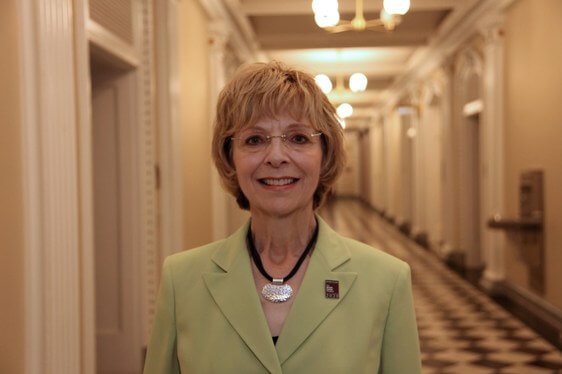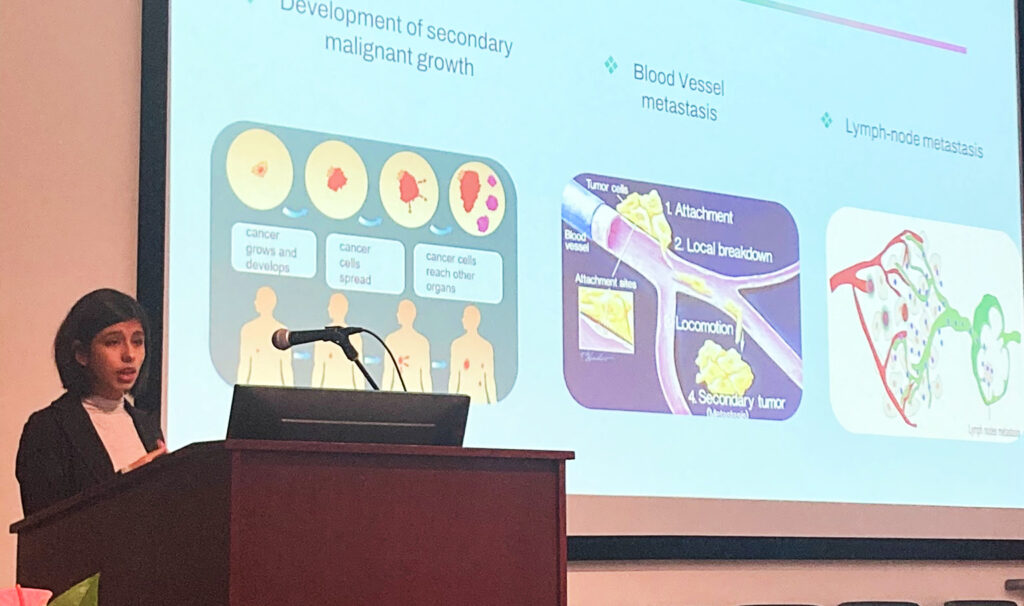When do Americans think about breast cancer? Most hear the disease discussed in October with the message “Get a mammogram so if cancer is found early, you can survive.” Americans need to know more than that narrow message.
My first mammogram was done when I was 44. All was clear. The next mammogram showed a suspicious lesion which was identified as breast cancer. Offered a lumpectomy, I stubbornly requested a double mastectomy. I wanted to be cured and done with breast cancer!
Twelve years later pain in my rib led to scans which identified suspicious spots on my spine. A biopsy revealed metastatic breast cancer. I was shocked and angry. What more could I have done?

Photo of Shirley Mertz via Obama White House Archives
Metastatic disease has been in my life for 18 years. I would love to live each day without thoughts about breast cancer, but that is not possible. Since knowledge is power, I work hard to stay informed about the latest treatments and advances. Metastatic breast cancer is treatable, but not curable. Patients are in constant treatment and must be monitored to see if treatments are working. Anticipating scan results causes much anxiety. Also adding to one’s distress is deciding whether to tell others that you have an incurable disease. People’s responses show that they don’t understand metastatic disease when they say, “Don’t worry, my Aunt had breast cancer and she is just fine now.”
Current estimates are that 164,000 women and men live with metastatic breast cancer in the United States. Annually, approximately 44,000 individuals die of the disease—120 lives every day. For some, their first diagnosis is metastatic breast cancer. For others, like me, the diagnosis is made 5-10+ years after being treated for early stage breast cancer, where the cancer remains in the breast. With a metastatic diagnosis, breast cancer cells have traveled to bones, lungs, the liver, or the brain. Metastatic breast cancer is not one disease. There are three subtypes that are identified by what is
making the cancer cells grow.
My experience living with the disease has been a roller coaster with ups and downs. The first treatment selected did not work and cancer spread from my spine into my skeleton and liver. This occurred because my metastatic breast cancer mutated and became a different subtype than my early stage disease. When a new doctor confirmed this change in subtype and suggested a new, targeted treatment, the cancer went into remission after 10 months of treatment. I was filled with joy (the roller coaster was going up). I had hope for the future.
Metastatic disease has been in my life for 18 years. I would love to live each day without thoughts about breast cancer, but that is not possible. Since knowledge is power, I work hard to stay informed about the latest treatments and advances. Metastatic breast cancer is treatable, but not curable. Patients are in constant treatment and must be monitored to see if treatments are working. Anticipating scan results causes much anxiety. Also adding to one’s distress is deciding whether to tell others that you have an incurable disease. People’s responses show that they don’t understand metastatic disease when they say, “Don’t worry, my Aunt had breast cancer and she is just fine now.”
I believe that what will make the biggest difference in patient outcomes is for more research funds to be focused on metastatic breast cancer. In 2014, the Metastatic Breast Cancer Alliance reviewed funded breast cancer research grants and learned that only 7% of all funded grants were focused on metastatic breast cancer. That percentage is sad. The percentage must be higher, since it is metastatic disease that causes death, not early stage breast cancer.

We need to uncover the causes of metastasis and find new targeted treatments so that one day metastatic breast cancer will be a chronic disease like heart disease or diabetes. Young people can help patients by informing the public how metastatic disease is different from early stage breast cancer and how patients live with the disease and treatments all year—not just in October.




